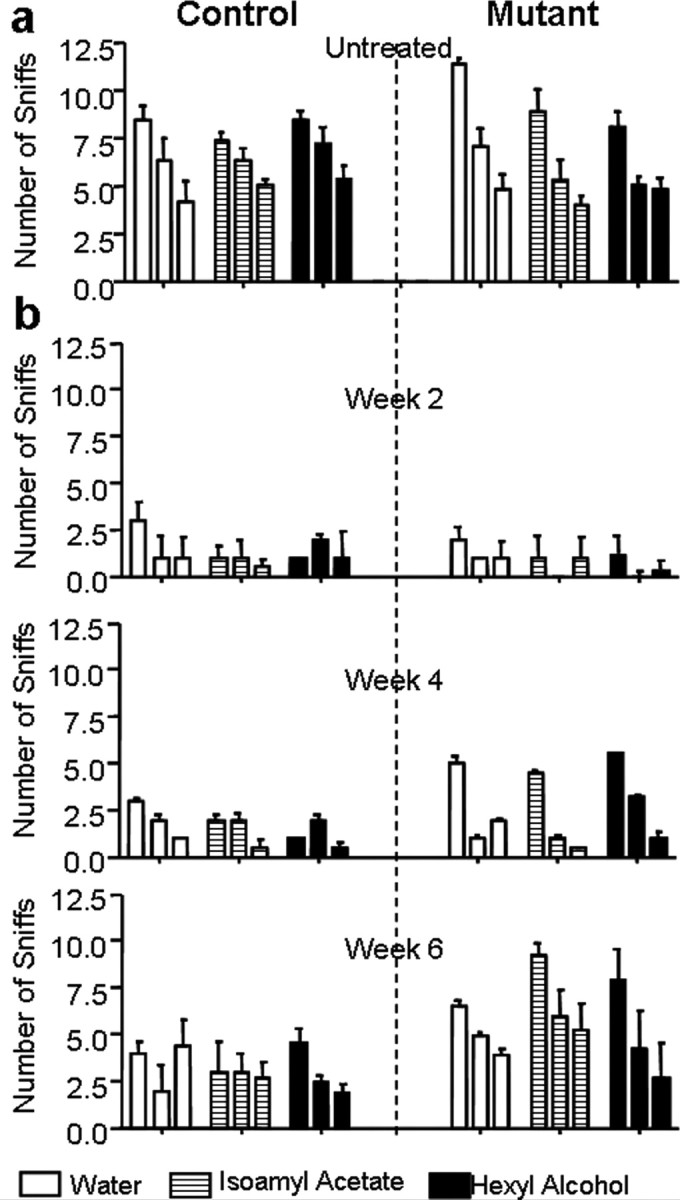Figure 6.

Enhanced olfactory habituation and recovery after epithelium injury in Ptenloxp/loxp;mGFAP-Cre+ mice. a, b, Control and mutant mice were subjected to the olfactory habituation test. Pretraining of wild-type control mice to a cotton swab soaked in water habituated mice to the presence of the swab in their cage. This was manifested as a decline in the number of sniffs with subsequent exposures to the swab. During odorant testing, the cotton swab was laced with 50 μm isoamyl acetate or 50 μm hexyl alcohol and introduced on three successive trials. The fact that the control mice sniffed the isoamyl acetate- and hexyl alcohol-laced cotton swabs more times than during the third exposure to the water swab indicated that the animal was able to smell these odorants. a, Compared with control, mutant mice sniffed the swabs less frequently in the second and third exposures (all three conditions) signifying they habituated to the novel odorant faster than the control. n = 14 (control) and 12 (mutant). b, Both control and mutant mice lost their ability to detect odorants at 2 weeks post treatment, whereas the ability of mutant mice to detect odorants began recovering at 4 weeks post treatment, and their ability to detect odorants was restored to pre-treatment levels by week 6. Data are means ± SEM; n = 8.
